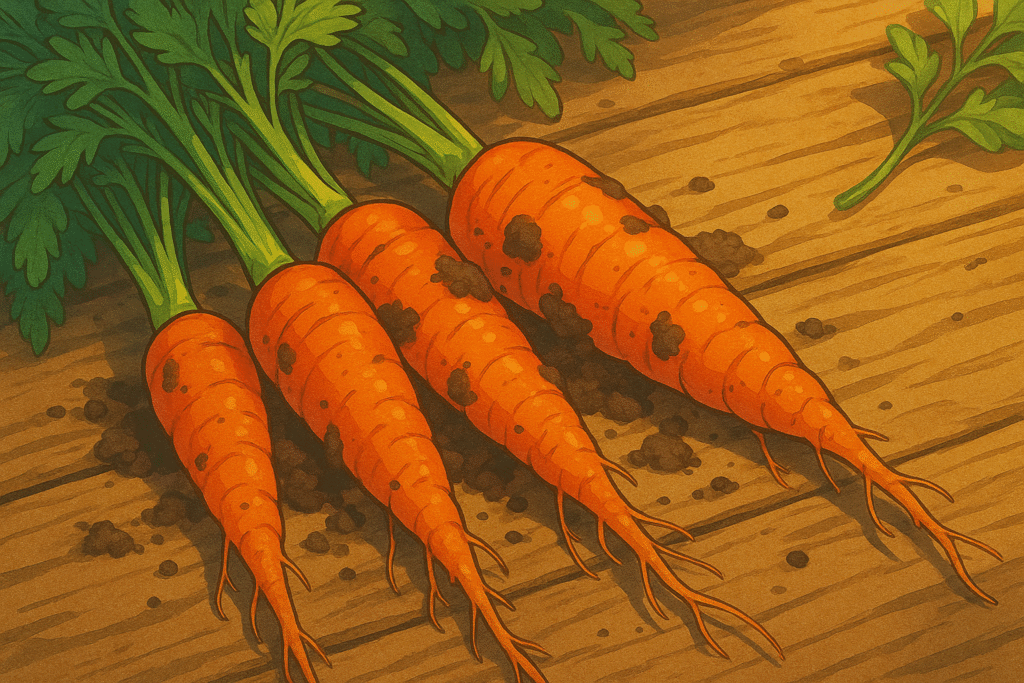Carrot (Daucus carota subsp. sativus)

About Carrot
The carrot is one of the world’s most recognizable vegetables — sweet, crunchy, and endlessly versatile. From raw snacking and pickling to starring roles in stews, curries, and even cakes, carrots bridge cuisines and continents. Their flavor ranges from sugary to earthy depending on variety and terroir, and they’re loved for that satisfying bite and bright orange glow.
But carrots weren’t always orange — and their journey from medicinal root to global pantry staple is far more colorful than most realize.
The History of Carrot
Carrots likely originated in Central Asia, particularly in what is now Afghanistan, where early varieties were purple, red, and yellow. Initially valued more for their medicinal properties than their flavor, these ancient roots were closer to wild cousins — tough, fibrous, and strong-flavored.
The modern orange carrot appeared in the Netherlands in the 16th or 17th century. Legend (possibly myth) says Dutch growers bred orange carrots as a tribute to the royal House of Orange — a patriotic twist on vegetable breeding. Regardless of truth, it’s from this innovation that the sweet, juicy carrot we know today took root — literally — across Europe and the world.
The Science of Carrot
Carrots owe their vivid color to beta-carotene, a pigment the body converts into vitamin A — and which also gives carrots their subtle sweetness. Purple varieties get their hue from anthocyanins, and yellow ones from xanthophylls.
The characteristic crunch? That comes from the structure of tightly packed xylem and phloem — the plant’s vascular tissues. Carrots store sugar underground, especially in cooler climates, which is why they taste even sweeter when harvested after a light frost.
The Geography of Carrot
Carrots grow in temperate zones worldwide — from Poland to Pakistan. Their adaptability makes them a global crop, but flavor and color vary by region. Cooler climates tend to produce sweeter carrots due to slower sugar metabolism, while warmer zones might yield spicier, more herbaceous notes.
Asia still grows purple and red varieties, especially in India and China, where carrots are used in everything from halwa to fermented pickles.
Varieties of Carrot
Danvers
Classic orange, cylindrical and ideal for general cooking.
Chantenay
Short and stout, great for roasting or growing in shallow soil.
Purple Dragon
Eye-catching with a deep purple skin and orange interior.
Nantes
Sweet, crisp, and coreless — a favorite for raw snacking.
Kuroda
A popular Asian variety, often red-orange with a rich flavor.
FAQs All your questions about Carrot: answered
Are all carrots orange?
Not at all — they can be purple, white, red, yellow, or even black depending on variety.
Why do carrots taste sweeter in winter?
Cold triggers the plant to convert starch into sugar, making the root sweeter and more palatable.
Can you eat carrot greens?
Yes! While not as popular, carrot tops are edible and have a parsley-like flavor.
What’s the best way to store carrots?
Remove the tops, store unwashed in a crisper drawer in a breathable bag or damp cloth.